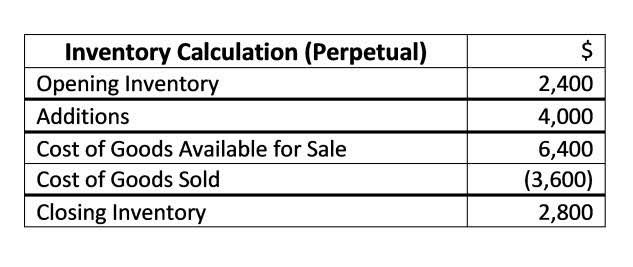
After almost a decade of experience in public accounting, he created MyAccountingCourse.com to help people learn accounting & finance, pass the CPA exam, and start their career. An encumbrance can be either financial or non-financial, depending on its nature. The encumbrance processesuse the encumbrance definition information to calculate and distributeencumbered deductions and taxes, as a flat amount, and/or as a percentof encumbered earnings. In this document, the IT department can list the equipment they want to purchase and the vendor they intend to use. It’s then automatically sent to the department head and anyone else who must approve the purchase based on the approval workflow rules and thresholds that have been set up in the PurchaseControl system.

Accurate reporting

Be sure to allocate the encumbrance to the appropriate account and ensure accurate tracking. Encumbrance journal entries and accounting are also sometimes called commitment accounting. This naming makes more sense when you realize that encumbrance enables budgetary control by recording money that is allocated for future projects, preventing over-expenditure of a budget. There are various software options available that can streamline the process and improve accuracy. These systems enable efficient encumbrance tracking, generating reports and providing real-time insights into encumbrance balances and activity. Under GASB standards, encumbrances are not considered liabilities, as no actual payment or transfer of goods or services has taken place.
Risk Management
Title companies protect the interests of both buyers and lenders by ensuring that the property is free and clear of any nasty surprises. Imagine buying your dream home, only to find out later that someone else has a legal claim to part of your backyard. Let’s be honest, legal requirements can feel like navigating a maze blindfolded.
What Does the Encumbrance Accounting Process Look Like?
By using encumbrances, a government entity can be assured that it will not over-extend its finances. A downside of encumbrances is that they increase the complexity of government accounting to some extent. An encumbrance is a specific amount of money within a budget designated for an approved purchase or contractual obligation. It signifies that a future payment will be made, but the actual expense has not yet occurred. Unlike a liability, which is an existing obligation to pay a specific amount to a specific entity, an encumbrance is a pre-expenditure or a reservation of budgetary authority. It acts as a placeholder, indicating that a certain sum is no longer available for other spending, even though the cash has not yet left the organization.
The Strategy score measures alignment of supplier strategies with customer requirements in a 3-5-year timeframe. Barbara is a financial writer for Tipalti and other successful B2B businesses, including SaaS and financial companies. She is a former CFO for fast-growing tech companies with Deloitte audit experience. When she’s not writing, Barbara likes to research public companies and play Pickleball, Texas Hold ‘em poker, bridge, and Mah Jongg.
- This promise is usually spelled out in a contract, purchase order, or other agreement.
- A policy was not elected on the use of unrestricted amounts; therefore, the default will be used where committed resources are used first.
- Encumbrance definitionsspecify how the system calculates deduction and tax encumbrances,as well as the combination codes used.
- It’s essential to clearly distinguish between these two types of transactions in accounting records.
- By understanding the different types of easements and their implications for property owners, buyers can make informed decisions when engaging in real estate transactions.
Encumbrance accounting involves recording encumbrances in the general ledger when the organization is certain about the time and amount of the anticipated expense. One way is to look for over-expenditures in reports generated after posting actuals and encumbrances. The other is to identify potential over-expenditures before they occur by verifying whether the budget has sufficient funds to cover the actual and hidden costs. The encumbrance concept is also used in real estate, where it is a claim against a property. For example, there may be a property tax lien or mechanic’s lien on a property.
Expenses
- This is done before creating and collecting the underlying documents, such as purchase requisitions and purchase orders.
- Encumbrances serve as a tool for budgetary control, helping governments track obligations and ensure that they do not exceed authorized spending levels.
- It provides insights into future cash flow requirements and helps in identifying potential budget shortfalls or surpluses.
- To illustrate these points, consider the case of a government planning to build a new public library.
- When a real estate property has a lien or easement, it is considered encumbered.
- When you take out a loan – whether it’s for a shiny new car or that dream house – the bank often puts a lien on the asset.
- For example, if a contractor made adjustments to your property that were never paid for, the contractor might establish a lien.
The PI and department should ensure funds are available for the payments (actuals) expected to hit the general ledger during the current budget period. The remaining outstanding amount of each encumbrance during Fiscal Year End Close will carry over from one year to the next. From the perspective of financial officers, the emphasis is on precision and foresight. They advocate for real-time tracking systems unearned revenue that can provide instant updates on encumbrances and expenditures. Meanwhile, auditors stress the importance of regular reviews and reconciliations to detect and resolve discrepancies.

Importance of Encumbrances in Budgeting and Financial Planning
This proactive approach allows for better cash flow management and reduces the risk of fund shortages for planned purchases. The process of recording and managing encumbrances involves specific accounting steps to track funds from commitment to actual expenditure. When an organization initiates a commitment, such as issuing a purchase order for $10,000, an encumbrance is created. This is typically recorded encumbrance accounting definition in a budgetary ledger, not the general ledger, as it is not yet an actual expense or liability. A conceptual entry involves debiting an “Encumbrances” account and crediting a “Reserve for Encumbrances” account, signifying that funds are earmarked. This action immediately reduces the available budget balance for future spending.
- An encumbrance is a legal claim, restriction, or liability on a property that may limit its use or transferability.
- Rather than just looking at current transactions, this type of accounting encourages tracking upcoming expenses to help show a more detailed view of your cash flow.
- Encumbrance accounting helps track what funds are expected to be spent, aiding in budget control.
- This ensures that these funds are earmarked for their intended purpose only, preventing them from being allocated elsewhere.
- Encumbrances are recorded when a government entity commits to spending, such as issuing a purchase order or entering a contract.
- When adjustments or cancellations to a purchase order occur, the original encumbrance must be reduced or eliminated.
Definition and Purpose of Encumbrances
- Holders of the easement must abide by its terms or face potential legal action.
- The transaction will appear as an actual expense and the encumbrance will be reduced accordingly.
- As governments worldwide strive for better fiscal health, encumbrance accounting stands out as a key tool in achieving that goal.
- This method provides a clear picture of the government’s available budget at any given time, preventing overspending and promoting fiscal responsibility.
By thoroughly understanding the role of encumbrances and practicing journal entries, you’ll be well-prepared for https://www.dcm.co.za/how-to-do-bookkeeping-for-real-estate-a/ exam questions on this important topic in government accounting. Once the goods or services that were ordered are received, the encumbrance must be reversed to reflect that the commitment has now been fulfilled. The original encumbrance was a budgetary placeholder, so now that the expenditure is ready to be recognized as an actual cost, the encumbrance is no longer needed.

